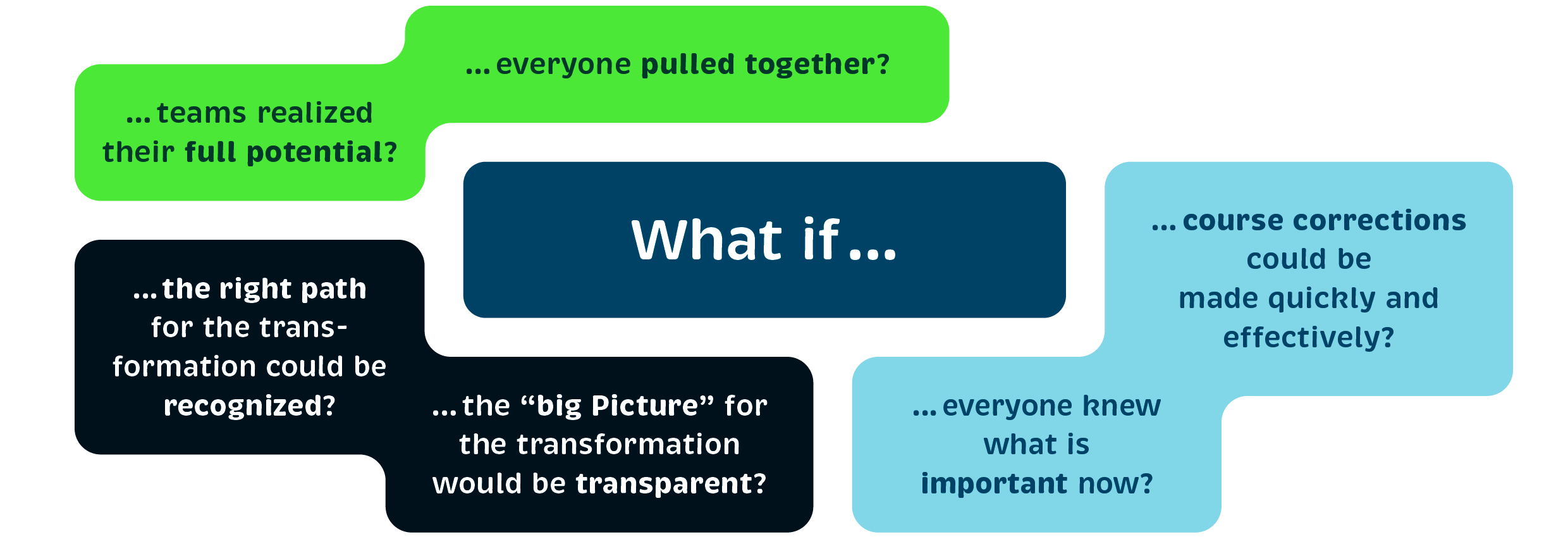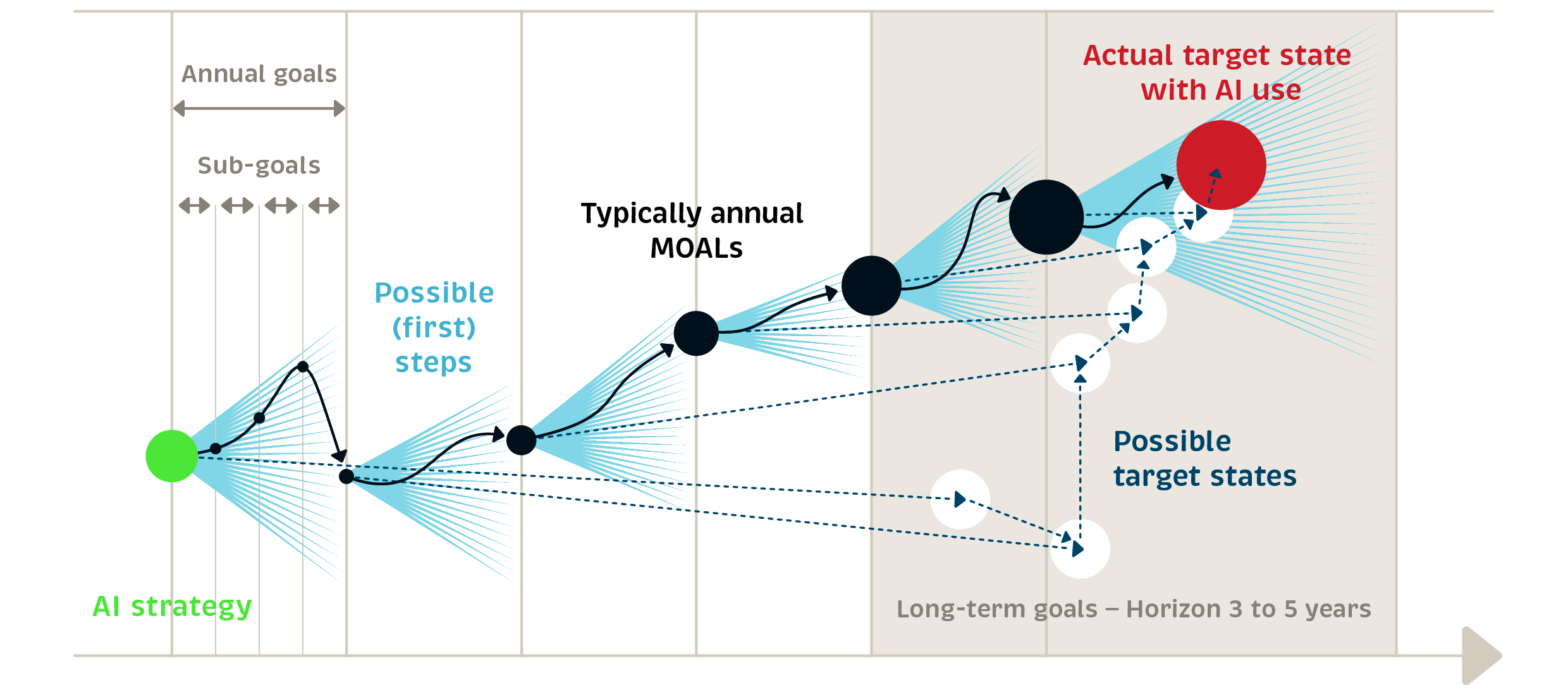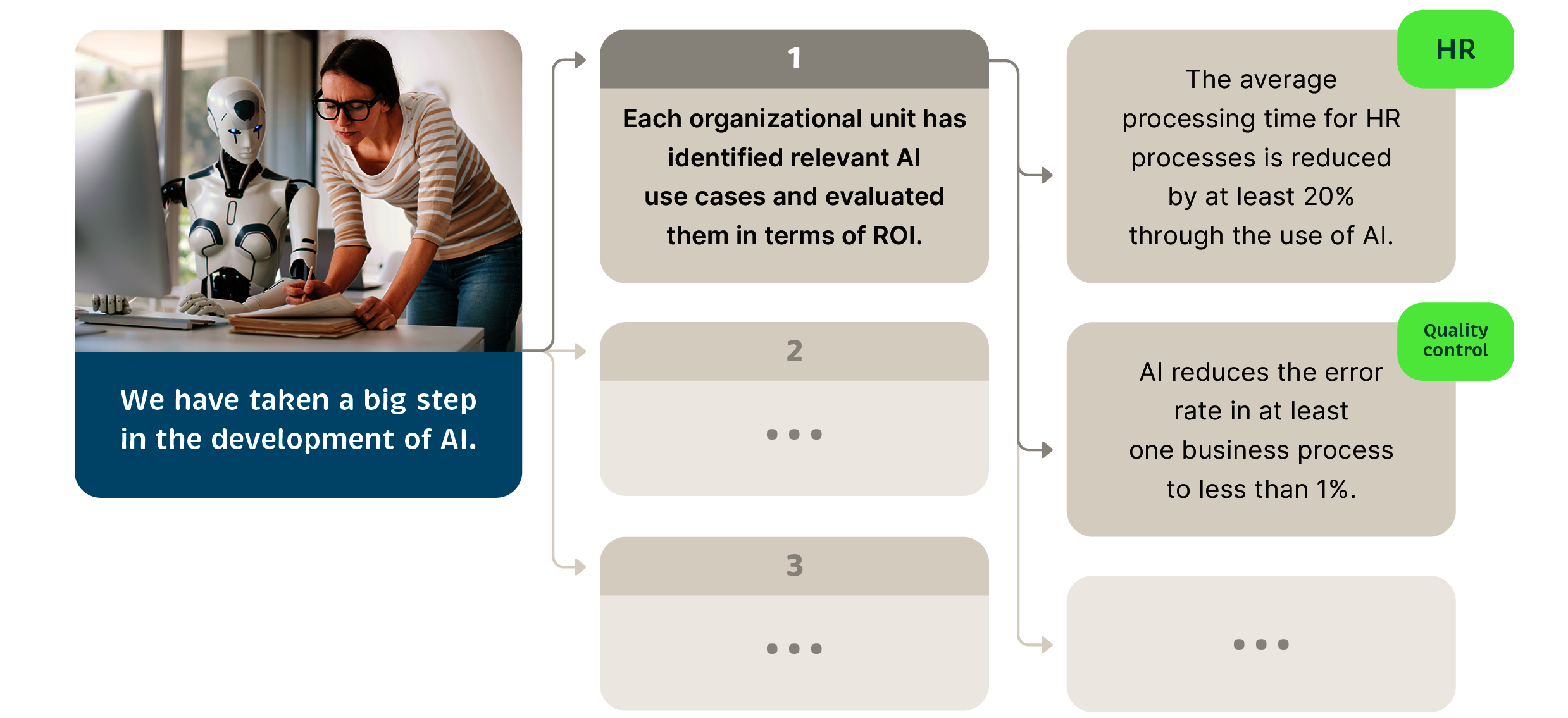Artificial intelligence (AI) is a megatrend that will shape the future of many industries and companies. But the AI transformation is a huge task, and how can it be successfully navi-gated when the vision is still unclear, the use cases are diverse, and the technology is con-stantly evolving? This blog post is intended to show why goal setting is an effective tool for planning, managing, and measuring the AI transformation. I will be presenting a number of practical examples from our transformation projects at Campana & Schott that can hopefully provide some inspiration.
1 Why goal setting is important to the AI transfor-mation
The AI transformation is a complex long-term challenge that requires not only technical know-how, but also strategic thinking, organizational learning, and cultural change. As the most recent Work Trend Index Report from Microsoft and LinkedIn shows, many organizations lack a clear vision and structured execution plan for the AI transformation.
Overcoming this challenge requires a clear direction, a shared focus, and ongoing adjustment. Goal setting can help achieve that.

Goal setting is the art of defining, pursuing, and achieving goals. This is about more than just identifying quantitative key indicators. It’s also about creating qualitative change. Goal setting helps break down the AI transformation into manageable steps, increase employee motivation and commitment, and monitor and improve the progress and impact of AI initiatives.

Another advantage of goal setting is the orchestration of the (many) units and disciplines required to make the AI transformation a success. Goal setting creates a shared language and vision for the AI transformation, which everyone involved can understand and support. This means goal setting also promotes collaboration and dialogue between the various units and teams, which learn from each other and can inspire each other. Goal setting also makes it possible to identify and coordinate the dependencies and interfaces between the various AI initiatives to tap into synergies and avoid conflicts.
2 How goal setting can be used in the AI transformation
There are various methods and frameworks for goal setting that can be appropriate depending on the context and objective. One framework we use successfully at Campana & Schott is called objectives and key results (OKR). OKR is an agile, transparent goal-setting framework that was originally developed by Intel and popularized by Google. It consists of two elements: objectives, and key results. Objectives are qualitative, inspiring goals that set the direction and establish the meaning of the AI transformation. Key results are measurable and achievable results that show whether, and if so how, objectives are reached.
To use OKR for the AI transformation, we recommend taking the following steps:
- Define your long-term vision for the AI transformation. What do you want to achieve with AI? How do you want to set yourself apart from the competition? How do you want to inspire your customers? How do you want to optimize your internal processes? This vision should be ambitious, but not unrealistic.
- Use it to determine your annual objectives. What are the key goals you want to achieve this year in order to get closer to your vision?
- Determine your key results for each objective. How do you measure the success of your objectives? What key figures or indicators do you use? These key results should be quantifiable, understandable, challenging, and verifiable.
- Translate your objectives and key results to the various organizational units and teams. How do each unit and team contribute to the overarching goals? What are their own goals? These goals should be coordinated with higher levels and communicated transparently.
- Check in regularly on the progress and impact of your objectives. How far have you gotten toward achieving them? What obstacles or opportunities are there? How can you adjust or improve your goals? This review should take place at least quarterly and should lead to concrete measures.
3 Adding concrete detail with an example
Assume your organization’s goal is to enhance efficiency and competitiveness through strategic use of AI. Most companies are operating at this fairly generic level right now – and there’s nothing wrong with that, but it’s not enough. If you sharpen this goal and add more concrete details, it will create significantly more clarity, focus, and transparency. Here is an example of how the generic goal outlined above could be broken down at the annual level as a first step:
“We’ve taken a big step in harnessing AI – in terms of market positioning, adaptation of our services, service delivery, and the area of use by our inside sales team alike.”
The following “additions” add more concrete detail on what exactly is behind this:
- We have a compact AI strategy (five standard-size pages max.) that outlines a basic framework for AI adoption by the end of 2025.
- Each organizational unit has identified AI use cases relevant to it and evaluated them in terms of ROI.
- We are perceived on the market as a relevant, forward-looking tech company, and we have 20 products and services relating to AI across all product groups in our portfolio, along with ten published customer references.
- Each product category has reviewed the use of AI for existing services and used the product development process to incorporate it into relevant services where it makes sense to do so.
This allows organizational units and teams to strategically orient themselves toward the objectives, define their own goals, and align those goals with corporate objectives. For example, the HR department could be assigned the goal of reducing processing time for HR processes, and QA could be given the objective of lowering the error rate in a business process. The goals are visible to everyone within the organization and are reviewed and adjusted regularly.

This goal setting approach establishes a clear direction, a shared focus, and ongoing adjustment for the AI transformation.
4 Tool-supported goal setting
To make goal setting for the AI transformation effective and efficient, it can be a good idea to use a software tool that facilitates setting and tracking of objectives. A tool like this, such as Viva Goals from Microsoft, can enhance transparency, collaboration, and employee motivation by offering a clear overview of progress and challenges. Viva Goals also enables easy adjustment and updating of goals based on data and feedback. Organizations can use a software tool to manage and measure their AI transformation systematically and with agility.

5 Conclusion
The AI transformation is an important step for organizations that want to remain competitive and innovative in the digital age. To navigate this transformation successfully, you need a clear vision that inspires and includes all employees. You also need concrete first steps that move you toward this vision. Tool-supported goal setting can help you define and track these steps. Make your goals transparent, collaborative, and agile and measure your progress. This will help you not only enhance efficiency and productivity, but also grow your creativity and power to innovate.

